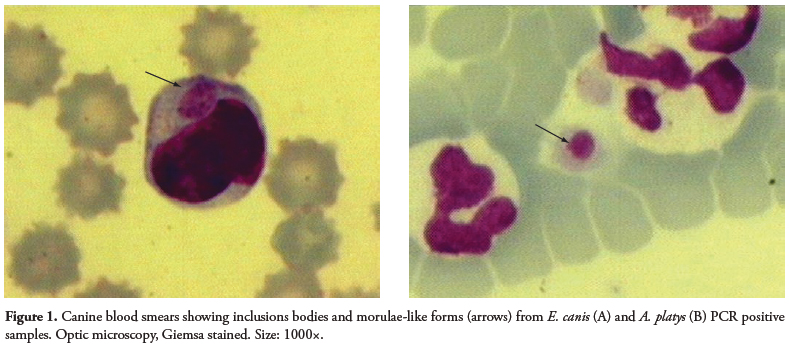Ehrlichioses are important emerging zoonotic tick-borne diseases that can affect both animals and humans. Clinical manifestations of ehrlichiosis caused by different members of Anaplasmataceae in dogs are similar to each other and to other diseases showing systemic manifestation. The observation of inclusions in white blood cells and in platelets cannot be used to confirm the Anaplasmataceae etiologic agent of the disease. In this work we assessed the presence of Anaplasmataceae agents in 51 dogs from two different cities (Jaboticabal and Campo Grande) showing clinical and microscopical diagnosis of ehrlichiosis, by using molecular techniques. Anaplasmataceae DNA were amplified in 46/51 (90.2%) of the blood samples; 22 (40%) samples from Jaboticabal and 10 (18.2%) from Campo Grande were positive for E. canis nPCR. Anaplasma platys DNA was amplified in 2 samples from Jaboticabal and in 11 from Campo Grande. Phylogenetic analysis of E. canis and A. platys DNA confirmed the infection agent and showed that PCR is the most reliable method to diagnose ehrlichial infection.
Dogs; Ehrlichia canis; Anaplasma platys; PCR; Brazil



